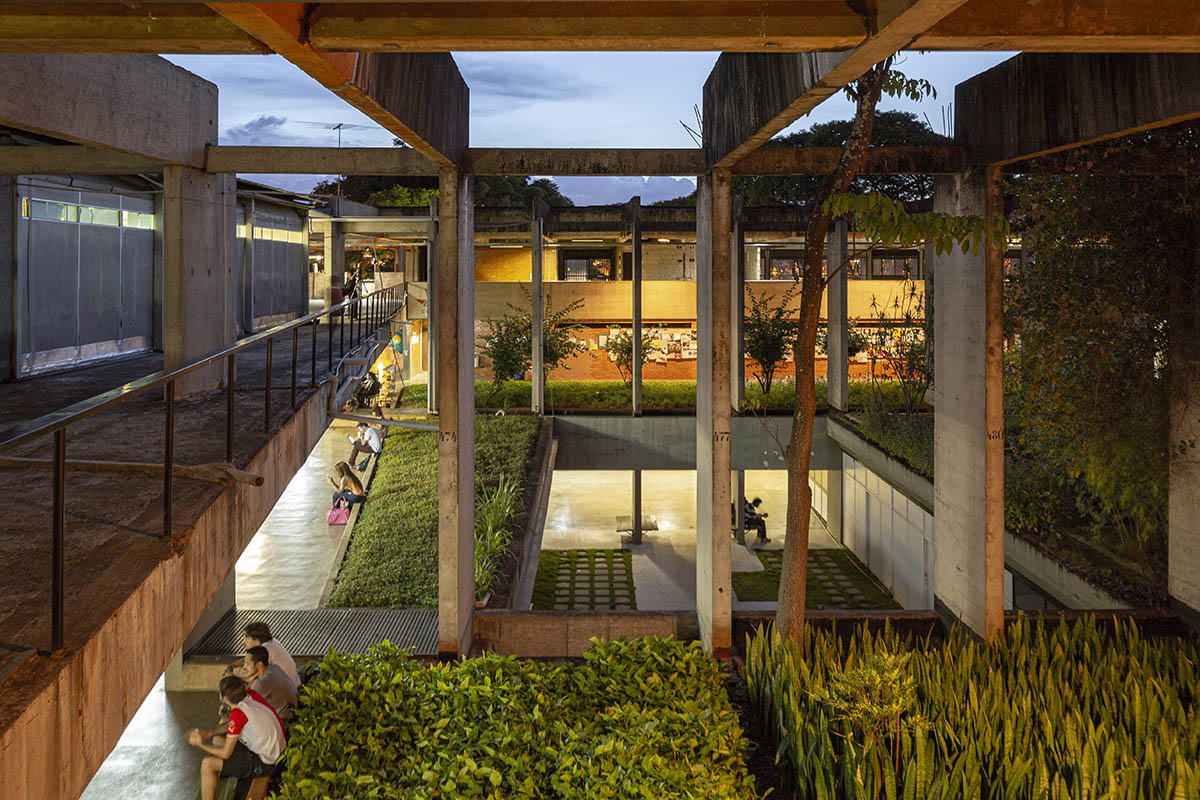
Brazil Pavilion will explore the relationship between architecture and infrastructure in Venice
worldarchitecture.org
Submitted by WA ContentsBrazil Pavilion will explore the relationship between architecture and infrastructure in VeniceBrazil Architecture News - Feb 21, 2025 - 15:17 html PUBLIC "-//W3C//DTD HTML 4.0 Transitional//EN" "http://www.w3.org/TR/REC-html40/loose.dtd"The Fundao Bienal de So Paulo has announced the title and concept of Brazil's entry in the 19th International Architecture Exhibition at the 2025 Venice Architecture Biennale.The exhibition, titled (RE)INVENTION, is curated by the architects Luciana Saboia, Matheus Seco, and Eder Alencar of the Plano Coletivo group. The project analyzes the tensions and questions the socio-environmental circumstances of the modern metropolis by reflecting on the recent archeological discoveries of ancestral infrastructure in the Amazon.Inhabited Wall - Coati restaurant, conceived by Lina Bo Bardi and Joo Filgueiras Lima, 2014, Joana Frana / courtesy of the photographerThe exhibition, which is shown in two acts, creates a story that transcends space and time. The exhibition's first act demonstrates how Indigenous peoples transformed their surroundings over 10,000 years ago by building intricate infrastructures that combined technical know-how and environmental adaptation techniques.According to Matheus Seco, the concept of "balance" is essential to comprehending the curatorial proposal's entire relevance."Today, we know that the ancestral peoples of the Amazon were organized in much larger populations than previously thought. The regions forests are largely the direct result of human action, the fruit of a balanced occupation and careful management of the vegetation, in contrast to the model that prevails in the Amazon today, which often reduces the landscape to a scenario of devastation," said Matheus Seco.The second act moves the emphasis to modern-day Brazil, examining the subtleties of the connection between infrastructure and architecture as well as the potential for redefining the city through a selection of architectural practices, processes, and research. The possibility of identifying and appreciating design techniques and processes that are "encapsulated" in cleverly existent production, inherited, and appropriated is thus the main focus. Dryland Garden, Instituto Central de Cincias, Universidade de Braslia, Brazil, 2023, Julio Pastore / courtesy of the photographerOne of the exhibition's solutions, the Garden-Platform, demonstrates how native or temporally-adapted species have taken the role of a linear building with a garden running the length of it, which formerly required continuous irrigation. On a sizable precast, prestressed concrete platform, the naturalistic garden of flowers, grasses, and savanna plants is created, grows, blooms, and dries in accordance with the Central Plateau biome's seasonality. In accordance with this reasoning, more tactics are revealed as creative design behaviors that appropriate the preexisting, establish identities, and provide the built environment a chance to remake itself as reality."We propose an understanding of infrastructure that goes beyond its physical and utilitarian dimension, also taking into account its symbolic and social character. In our curation, we emphasize design strategies that allow for multiple uses and adaptation to context, seeking to transcend the analysis of specific cases to reflect on solutions applicable to different realities," said Eder Alencar.The curatorial team used the Brazilian Pavilion's structure as a support to reorganize its interior areas and create a minimalist display space. Every component of the installation is on the floor in the first room. The installation in the second room is made up of steel cables, CLT panels, and stones that serve as counterweights. When exposed to action and reaction forces, the system stays suspended and stable. After the show, the installation's materials can be recycled or put back together in other ways.Geoglyphs found in the state of Acre, Brazil, 2022, Diego Gurgel / courtesy of the photographerUnderstanding and appreciating phenomena of nature and social appropriation is crucial when talking about architecture, according to Luciana Saboia."Its about mapping actions that build our cultural heritage. Just as these original populations developed sophisticated techniques for occupying and managing the territory, the exhibition seeks to establish a link between tradition and invention, using elements that dialog with the environment and propose a sustainable cycle of construction and reuse," she said.Andrea Pinheiro, President of the Fundao Bienal de So Paulo, pointed out that a significant reflection on the climate emergency and the necessity of reconsidering our relationship with the environment can be found in the curatorial concept and the architectural design by Saboia, Seco, and Alencar."(RE)INVENTION invites us to learn from ancestral practices and to explore the symbiosis between humans, land, and nature as a path to a more sustainable future. Brazils participation in the Venice Biennale, the result of a fruitful partnership with the federal government, highlights the importance of strategies that reconcile a true commitment to the planet," said Pinheiro said.Aerial view of the installation, 2025, Plano Coletivo / courtesy Fundao Bienal de So PauloArt, engineering, biology, data science, social and political sciences, planetary systems science, and other disciplines are all connected to the materiality of urban space through the exhibition's direct connection to the general theme of this edition, Intelligens Natural Artificial Collective, which was conceptualized by Italian curator Carlo Ratti and invites participating nations to consider the intersection of natural and artificial intelligence.Studies of weights and counterweights, 2025, Plano Coletivo / courtesy Fundao Bienal de So PauloIn response to this challenge, the Brazilian proposal looks at how various knowledge systems, both traditional and modern, influence urban dynamics and territorial boundaries.The 19th International Architecture Exhibition will take place from 10 May to 23 November 2025 at the Giardini, the Arsenale and various venues in Venice, Italy.Diagram of the (RE)Invention installation, 2025, Plano Coletivo / courtesy Fundao Bienal de So PauloCarlo Ratti, recently, shared details and highlights of the 2025 Venice Architecture Biennale during a press conference. He said that "architecture must rethink authorship and become more inclusive, learning from science."The top image in the article: Garden Platform - Jardim de Sequeiro - ICC, conceived by Julio Pastore and Oscar Niemeyer, 2021,Joana Frana/ courtesy of the photographer.> via Fundao Bienal de So Paulo
0 Comments
·0 Shares
·49 Views


